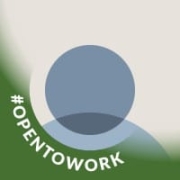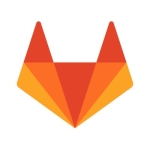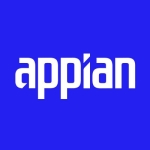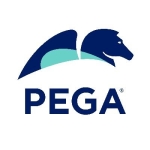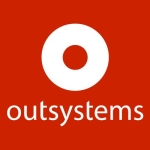
Microsoft Power Apps Primary Use Case
WA
Wayne Ahrens
Technology & Innovation Consultant at a construction company with 10,001+ employees
Microsoft Power Apps offers two different types: model-driven apps and Canvas apps. The model-driven app is useful for building a data model container and using pre-built tables to create a user interface, whether it's for reporting or data collection. The model-driven app works for pulling in data from other places, but it becomes hard to maintain as it grows larger. The Canvas app is most effective for serving up a SharePoint list or something similar, allowing for a very simple interface powered by usually only one source. However, it can get complicated when trying to do multiple things from multiple places and keep track of everything.
The data behind Microsoft Power Apps is segment data, which can raise complexity, especially if you want to create two or three apps or more. You have to recreate data feeds within each environment, which increases maintenance and proliferates data ingestion rules.
If you're using Microsoft Power Apps to connect to a SharePoint list and create a quick form for business users, it's highly effective. It's a phenomenal use case when it's serving a small group and powered off a single list, making it easy for almost every business user to pick up and run with.
View full review »We are building many tools, like an audit tool or a dashboard for our operations team, where they input values and store them in some bucket. Instead of doing a web-based application, we are using Microsoft Power Apps as a low-code platform.
We are also developing a single pane of glass for the operations team that navigates multiple systems in the background through Power Automate Flow, gathers information, and displays it in a grid. This combination of both time-saving, ease-of-use applications, and a single pane of glass provides all the required information to work on.
View full review »
We are creating a contractor app to allow us to track contractor-related data in an app rather than using Excel emails. Power BI is mainly for the reporting side for dashboard creations and analytics. This is used in a government, specifically a state agency, for managing contractors.
View full review »
Buyer's Guide
Microsoft Power Apps
August 2025
Learn what your peers think about Microsoft Power Apps. Get advice and tips from experienced pros sharing their opinions. Updated: August 2025.
867,676 professionals have used our research since 2012.
MK
Murli Manohar K
RPA Developer at a manufacturing company with 10,001+ employees
I have encountered numerous challenging use cases with Microsoft Power Apps, primarily in HR or operations and management. Most of the projects rely on document uploads and approval levels. I have implemented all these logics using Microsoft Power Apps.
View full review »
I work with Microsoft Power Apps for multiple solutions. The first one is automating the process by emailing our users. In our company, we receive some Excel files with the email addresses of our users. With Microsoft Power Apps, I create a data flow and define what type of user we have, like if the user is premium or if the user has to pay some charges or not, and based on that, I send different emails to the users. That is one process. The other process we use is Microsoft Power Apps, mostly with Microsoft Power Pages platform, to create a UX.
Initially, we used it mainly to wrap up Power BI reports for BetterView, creating straightforwardapps. About a year ago, it evolved into more robust apps for collecting information, particularly for logistics. We developed apps to streamline workflow and gather data for specific operations.
We then built a more advanced app that allowed us to communicate with customers—connecting workflow issues, creating problem reports, and sharing shipment updates via SharePoint, which integrates easily with Microsoft Power Apps.
Power Apps is used mostly locally, within one or two departments. Each app is developed locally, and it’s not used for enterprise-wide purposes. In our organization of about a thousand people, around six developers work with Power Apps. There are likely a couple of hundred users across all apps.
View full review »EK
Edit Kapcari
Power Platform Advisor and Head of Power Platform Team at Orbis AG
PowerApps is currently the best low-code platform because of Microsoft's investments—not just in low-code development but also in generative AI in order to accelerate development. The Power Platform integrates really well with all the new technologies, including AI. It's maturing fast, though I haven't had the chance to fully compare it with others like Mendix, which has been around for a while. To make a completely informed and unbiased decision on which is better, I'd need more experience with other platforms. But from my perspective, for most customers, it ticks a lot of boxes, especially in terms of rapid development.
Power Platform also supports developers when they hit the limits of drag-and-drop features. If you want to build something more native, that’s doable too. Our use cases vary depending on the customer.
Because we're a company that helps customers automate processes using Power Platform. Power Platform has a very industry-agnostic nature, meaning it can be applied across various sectors—whether it's healthcare, banking, construction, automotive, or manufacturing. Wherever there are processes still relying on paper, currency, or Excel that need automation, PowerApps is a good fit.
View full review »I work in the architecture and construction industry. We use Power Apps to create applications for users to enter updates on our projects. The data collected is linked to SharePoint and then used to update our dashboards.
We also use Power Apps for site inspection and issue tracking on our construction sites, connecting it with SharePoint for critical use cases.
View full review »Initially, we used it mainly to wrap up Power BI reports for BetterView, creating very simple apps. About a year ago, it evolved into more robust apps for collecting information, particularly for logistics. We developed apps to streamline workflow and gather data for specific operations. We then built a more advanced app that allowed us to communicate with customers—connecting workflow issues, creating problem reports, and sharing shipment updates via SharePoint, which integrates easily with Microsoft Power Apps.
Currently, Power Apps is used mostly locally, within one or two departments. Each app is developed locally, and it’s not really used for enterprise-wide purposes. In our organization of about a thousand people, around six people are developers working with Power Apps. There are likely a couple of hundred users in total across all apps.
View full review »
I use Microsoft Power Apps and some other tools in my company. Sometimes, we use just Test Studio. In general, we just use Microsoft-based software in our company.
We mainly use Power Apps for small applications. Ninety-nine percent of the work is on Internet or intranet solutions, specifically E2E and B2E. These solutions are designed to be developed quickly without being overly complex or requiring high performance or extensive handling of large datasets. In addition to these scenarios, integrating with other platform tools like Power BI and SharePoint enhances the solution. We generally avoid developing for B2C or B2B scenarios due to licensing issues and the nature of those markets.
View full review »KR
Konstantin Redko
Oracle eBS Solution Architect at Raiffeisen Bank International AG
It's for building custom apps, which is very similar to APEX. We also use it to build small business applications related to any Microsoft products.
View full review »We are a construction company, and we use the solution for a lot of project management tasks and to make some relevant tools for the business.
View full review »LS
Lucjan Stalmach
Director of the IT at Jagiellonian University
We use Microsoft Power Apps to support some IT processes and for employee evaluation. Sometimes, we use the solution to prepare electronic forms where we cannot use Microsoft Forms. We also use Microsoft Power Apps to prepare small custom applications.
View full review »We use the solution to implement new Teams apps. Some customers want apps on every mobile phone in their company. This is implemented using Dynamics or SharePoint, with a list of plan data displayed on the mobile phones. Everyone enters the data and plans when holidays or machines, like magnetic resonance scanning machines, are to be used. Everyone enters this data and coordinates using that Blackboard application. It is for enterprise resource planning or HR planning.
View full review »Our use case for the product revolves around financial applications, including account services, a service portal, asset transfers, and additions for the organization. It involves multi-level approval processes for stakeholder identification and managing entries in the DLP lecture.
View full review »We have built a couple of apps ourselves, but mainly, we are building the apps for our customers.
Right now, our primary use case is very easy to explain. I push applications for applications and supply applications on mobiles because a lot of my customers need to have to access certain data from an iPad or iPhone.
View full review »CP
ChristopherPreffer
Director, Program Innovation & Improvement Medicare at UPMC
We use Microsoft PowerApps for internal business solutions that eliminate the need for Excel workbooks.
View full review »We use the solution for collaboration modules within our company. For example, we use Power Apps to handle requests when investing in projects abroad and needing approval.
View full review »We are a big global company that is involved in a large volume of setups involving Microsoft solutions like Power Apps, Power BI, and Power Automate for different environments across departments in organizations functioning at a global level. So we are involved in delivering services while focusing on the setup processes for different environments and departments. It helps the people at work since solutions like Power Apps and Power Automate function excellently.
View full review »KR
Konstantin Redko
Oracle eBS Solution Architect at Raiffeisen Bank International AG
We are using Microsoft Power Apps for data collection and processing for small intergroup business applications for our internal needs.
View full review »OC
OmarChavez
Lean Manager at GrupoPhoenix
Power Apps is a tool to create forms and solutions for collecting information from the floor. We have 10 or 15 users at the moment, but we expect to add more.
View full review »The primary use case for this solution for us is building in-house applications rather than having to purchase them. We build fairly basic applications and we would rather use Power Apps to deploy them or create them in-house.
View full review »Power Automate is like process automation.
Any task which you do on a recurring basis or a daily basis, you can simply automate. For example, if you have a use case where every day when you go home you need to book a cab. What I can do is I can automate that task through Power Apps at a scheduled time every day. If I'm leaving at about four o'clock in the evening, by 3:30 I can run that Power task and book a cab every day.
View full review »We had a new requirement from a business in the clinical domain and the business wanted to identify risk at a study or site level. We created an application using PowerApps, which works well as we usually interact with the SQL Server on Azure.
View full review »We use the solution to create applications. We were getting ideas, fine-tuning, and putting them in different queues that are available to the whole organization.
View full review »The solution is used internally in my company.
View full review »The one that we currently have is only to SharePoint Online as we want to be able to have analysts be able to maintain data, and we want a graphical user interface, a GUI front end, to do that. Especially if it's interfaced with PowerBI, it allows analysts to have a research tool to identify what data needs to be updated right there, and to then be able to do that through PowerApps is a huge benefit. Right now, we're only able to write back to SharePoint Online.
View full review »I had to upload a form, an invoice, specifically, and then using an Azure function, I had to get that form from the Dataverse database and feed it to an Azure form recognizer and write the data back to the Azure Power App.
View full review »LP
LilianaPina
Owner at 40+60 consulting
We use this solution to provide a cloud-based platform for our clients to develop, connect, and store data from across the full Microsoft suite.
View full review »We predominantly use the product for a lot of intake forms. There is a lot of data collection and a lot of intake forms. We use Power Application for validation rather than using spreadsheets. It's good for automation, where we need a data repository of the input, which we get from the resource.
View full review »Microsoft Power Automate is primarily used to update some legacy systems for our client, as well as government compliance systems and web-based reporting systems that don't have APIs. Microsoft PowerApps has the same use case. It's the front end and is the part that is interacting with the client and interacting with the collected data.
View full review »We use the product for sales and customer service features.
View full review »My primary use case for Microsoft Power Apps are mostly demos for my customers and in trainings. I am a Microsoft Registered Trainer.
We use Microsoft PowerApps for very small use cases. For example, conducting internal surveys, or say some of the key business stakeholders want day-to-day reporting. Using PowerApps, we are creating such reports for those executives.
We connected PowerApps to the relational database, which generates the report.
Also for contract review and approval of these types of use cases. Those are, in my opinion, very simple use cases. There are no complex rules or decision-making processes, which is why PowerApps was designed.
View full review »The solution is for rapid application development software.
There is a specific environment, in part a platform of PowerApps, in which you can just deploy the solutions and then you share the link with the users and they are able to open them using iPads or mobile devices, or even a computer.
We have been working to build a maintenance events app for assets, it's an app to manage and show all the assets that have been working or down for maintenance in an operation, inside one bigger mining company. They have many trucks and many other, let's say, machines in the operation and sometimes they have to put these machines just through a maintenance mode, to see what's happening, or to change some part specifically, or even if the machine is having some kind of issue. That's due to the fact that if it's down, they have to manage how long it's down and what was the part that was the issue, the cause of the issue. They have to change the parts and everything's very costly in terms of money for the company when we have one specific asset that's down.
Previously, they were using a board in a room, just to manage all these statuses. Instead of this, now we have one specific app that is working in live modes in almost real-time. Just getting the data from the services and showing it on a big board in PowerApps can show what's happened, what's the status, and what's the reason for the issue. This app allows for adding some comments. It's a collaborative app where many people can just go there and add comments and notes about what's happening with the machine.
View full review »We use the solution to integrate with enterprise solutions like SAP and other enterprise solutions. It's highly integrated and highly secured.
View full review »With Power Apps, we create some of the collaboration forms for our employees to use during the pandemic. We can record our employees' status health daily, and start a database of the information. After that, we can track using Power BI if there are any symptoms or if the risk is low, high, or medium. We use it basically for self-declaration forms.
EK
Edit Kapcari
Power Platform Advisor and Head of Power Platform Team at Orbis AG
I use it for internal purposes and also to advise our customers.
View full review »In the complete Microsoft Power platform, there are four components: PowerApps, Power Automate, Power Virtual Agents, and Power BI. We use all these four so we can make a complete solution, e.g. a visualization dashboard, automated chat bots, and the rest we can achieve using PowerApps.
Microsoft PowerApps has three types of applications. One is the canvas app. Another one is the model-driven app that is business specific and data specific. Another type of app we can use is open source, e.g. open projects that are called "portals". We can achieve the same thing when developing a website and when doing it in the portal. These are what we can achieve using Microsoft PowerApps and the Power Platform.
Microsoft PowerApps provide the user interface and functionality, e.g. we can create a normal app that is used on web or mobile. Microsoft PowerApps is similar to a form where you perform whatever you want to do. Some look and feel controls are also found in this solution.
Power Automate, on the other hand, is where we automate the backend processes, e.g. the notifications, data extractions, etc. For something that needs calculation, we use Power Automate, while building the user interface and user experience, we use Microsoft PowerApps.
We're using it for our business processes. We have applications for expenditure requests, travel requests, and accident reporting.
I am using the latest version of the solution.
View full review »I belong to a consulting company that develops applications using PowerApps.
View full review »KG
Kamesh Gunupur
Vice President - Information Systems at a media company with 1,001-5,000 employees
We use the solution as part of Dynamics 365 Online. Within that, we use Power Apps and we've integrated something on the on-prem database.
The app is located within Dynamics 365 Online. It draws data from an on-prem data source. We use it to perform certain actions in Teams, so we have Dynamics 365 and Teams integration.
We've created an email reader using Power Apps.
AA
Ameer Ali
Executive Director at Ali 4 Solutions FZE
We are an IT consulting company. We provide IT solutions to other companies.
We have had a few different requirements, one requirement was to create a simple online form that can be used by the clinics. When patients arrive, they will be given a TAB, to complete the form, which will be printed directly to the receptionist, once they complete the form.
Another application was supply chain management. Using PowerApps, we replicated the entire supply chain management. The corporate users will send the requisition to the purchasing department for review and approval, after which it will be distributed to prospective vendors.
Vendors will then submit their quotes for review. Multiple quotes can also be reviewed concurrently. This is all done with PowerApps. After they have reviewed them, they can select a vendor and process the PO.
In the third scenario, we developed a public relations system that you would find here in the UAE.
PROs must manage and obtain visa permissions in the United Arab Emirates. We have documentation with a two-year expiration date. As a result, we've developed a document management system that uses a Power Automated workflow system to view the alert and process the documents for all employees.
These are the workflows that we have worked on recently and have been created using Microsoft PowerApps and Power Automate.
View full review »OO
Oscar Osorio
Senior Programmer Analyst at Immigration and Refugee Board of Canada
We're not in production yet. We're still very much in the early stages of this solution.
View full review »CP
Christopher Preffer
Senior Product Manager Data Science at a insurance company with 1,001-5,000 employees
We primarily use the solution as a general business process improvement. We use it as more of a digital transformation to eliminate some archaic manual processes that the business has built up over time. We're working to make everything more streamlined.
View full review »We use this solution to integrate our apps, and send processed data via the different connectors it provides.
We use this solution for workflow automation.
View full review »We use Microsoft PowerApps for the typical use cases including website creation and a work portal, covering all the operations involving the manufacturing side of my customers.
There are three app-building interfaces available in PowerApps. Canvas is model-driven. Power Pages, which was Power Portal, which has more low-code, no-code capabilities and makes web design easy for the everyday user to create a website. Lastly, Power BI reports, or Microsoft DataWorks, which we have integrated with our data provide us the option to work collaboratively.
View full review »We have a partnership with Microsoft.
View full review »We use it as part of our analytics offering. We are basically into analytics. Maybe sometimes we use it to build small apps to instrument the research process. That's what we do.
View full review »We are user integrators and partners with Microsoft.
View full review »We primarily use the solution for in-house management. For example, for human resources and warehouse management.
View full review »I'm working for a company that provides services and develops projects for our clients. I am a solution architect and I use Microsoft PowerApps.
View full review »This is a low-code solution that I am using for making applications.
View full review »We migrated all the applications to the PowerApps Server and are sending some to other users.
View full review »PB
Pratik Bajaj
Sr. Digital Experience Consultant at a computer software company with 5,001-10,000 employees
My organization deals with the implementation of PowerApps and Salesforce. We are currently scaling up our capacity in low-code, no-code platforms. Essentially, this solution is for building forms from a front-end loan application and quickly rate a particular application.
View full review »We primarily use the solution to create apps for business users which navigates them from within our platforms.
View full review »Microsoft has come at the right time. To come out with a RAD (Rapid Application Development) tool where you can develop your apps on the cloud much faster, and deploy them for multiple devices, whether it is mobile, cloud, laptops, or desktops. It is similar to Oracle APEX or Oracle developer tools where you just drag and drop into your application within minutes.
The primary use case of this solution is case management reporting. If, for example, you have a set of engineers who have been assigned a particular case or project they will need to record all of their activities and their visits. Using the application created in PowerApps, they report everything, then it goes through a workflow.
The workflow goes from recording the daily activities of the team for the specific project. The project then goes through a series of approvals and gets logged, completed, and the report is generated.
Expenses are also being logged.
We have Power BI as well, and it moves the data from the source to the data warehouse then generates a report.
This is quite a short term, six-week engagement. We wanted to create an application and have it up and running within four to six weeks, rather than spending three to six months on bigger projects on the platform. We wanted it to be quick and fast.
PowerApps is best suited for those cases where you have a small scenario and an application to support that project or scenario. You can call these departmental applications, which are needed on the fly. We create a much shorter development lifecycle and then deploy, and then people start using it.
Take an example of the COVID-19 situation. We wanted all of our branches to log their COVID cases or what exactly are they doing daily to manage the COVID cases and to know what the process is. All of those details are logged into the COVID folder and then the reports are generated daily or weekly.
View full review »We use the Microsoft PowerApps platform to create low-code applications that are used for optimizing internal business processes.
View full review »Our sales reps use it in the field on a daily basis. I get the data from there and then analyze it for my needs. We are also developing an application to start using Microsoft PowerApps. I would assume we have the latest version.
View full review »I am not a PowerApps user, but recently I have been evaluating and scoring no-code to low-code platforms (for developing mobile apps). The score chart is divided into sections, such as usability and features like the ability to test and multi-platform. Due to these evaluations, I learned the systems well enough to be able to build a sample application on all of these platforms and then fill in my evaluation.
View full review »We’ve been setting up an invoice processing system using the tool's document automation reference model. I’ve also been customizing the document automation reference app to create workflows for our organization.
View full review »The solution is a low-code platform that quickly develops solutions for general business processes. Companies can integrate it with their existing systems, access data flows, and deploy applications within a matter of days or even a couple of days.
View full review »It was used to collect or gather information from the requests, assess requests, and evaluate the requests for a new potential project.
I am a consultant for developers and architects. People to whom I give consultation use it.
It is a cloud solution. Data can be cloud-based or on-premises, but it is mostly cloud-based.
View full review »PowerApps is mostly a front end. It's a form where users can input information, and it gets goes into a database.
View full review »RK
RahimKhowaja
Chief Information Technology Officer at BMC Solutions
We use the solution for making forms for Office 365.
View full review »We are into software consulting. We have been developing various solutions and leveraging PowerApps to do it.
View full review »Our primary use case of this solution is for when we're integrating something and need to extract some data. We use PowerApps to extract the data and create our own module inside PowerApps and create our own app. We extract data and integrate it with PowerApps.
View full review »I primarily use the solution for its business application. My business needed an application and so that's what we're using Power Apps for.
View full review »AF
ATHANASSIOS FAMELIARIS
S/W Technologies & Processes Unit Manager at Unisystems
We are customers and resellers. We mainly collaborate with Microsoft and supplemental applications.
View full review »We are currently piloting the solution, we are checking it with our workflow.
View full review »We're working on B2E applications and therefore we can't really get into specific use cases.
View full review »I am using Microsoft PowerApps for small apps for internal company management. I have been working only on small and simple apps. I haven't used it for making complex apps.
I am using the latest version of Microsoft PowerApps.
View full review »We use this product to develop small apps that are used internally. Nothing major.
View full review »LM
Linderman Torres
Architect director at Olimpiait
We use this solution for process authorization in our company.
View full review »Once you have a cloud solution, for instance, and you work within a Microsoft suite, such as Dynamics CRM, ERP, or another dynamic platform and you want to extend it with a mobile app, Microsoft PowerApps is the right solution.
Main limits will be the "vendor lock-in" concept, pricing for mass external users, and the training could be better. It is not intend to serve ex-Azur assets or on-prem.
View full review »BR
Bujjireddy Pokala
Technical Lead at SmartIMS India Pvt.Ltd
Our primary use case is for the three locations in our company. We use it mainly for setting up meetings in our various conference rooms. Numerous choices need to be made - size of room, number of phones and projectors, date, time, number of participants. It's a great way to keep track of everything. We have 200 users. We're gold partners and I'm a lead consultant in our company.
View full review »Our primary use for Microsoft PowerApps is to develop production-ready applications.
View full review »The primary use case of this solution is to automate the interaction between documents and departments. For example, it's a flow for someone who has to validate a request, a file, or to review another file. A flow is put in place to avoid email communication.
View full review »DG
DavidGerard
Business Intelligence Consultant at FumAstra Management Consulting
We primarily use the solution to create and arrange a number of requests, including requests for expenses, requests for leave, requests for documents, etc. Depending on the type of business, we can customize the request application.
View full review »YH
YousefHasan
Developer at Australian College of Kuwait
I'm a developer and we use the product for in-house development and finding in-house solutions. We have a developer relationship with Microsoft. I'm currently working on a smart parking app for a college here in Kuwait. It would be a big time saver and enable drivers to know where there are available parking spots when it's a busy time and would maximize free space usage. It would make things easier for everyone.
The primary use case of this solution is for developing Proof of concepts and for preparing some use cases to present or to showcase them to the customers. Nothing related to production. It's only for presentations and for showing the merchandise to the customers.
The deployment model we are using is cloud-based.
View full review »We use the solution for, production orders, and for statement classification expenses for a family company.
View full review »Our primary use case for the solution is collecting business data and checking for initiative ideas to collect information.
View full review »We did a POF with Microsoft PowerApps and we used it for simple automation tasks.
View full review »We use Microsoft PowerApps to get insight into the business. We use it for BI.
View full review »Buyer's Guide
Microsoft Power Apps
August 2025
Learn what your peers think about Microsoft Power Apps. Get advice and tips from experienced pros sharing their opinions. Updated: August 2025.
867,676 professionals have used our research since 2012.



